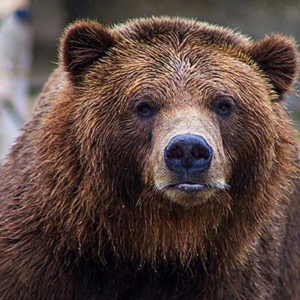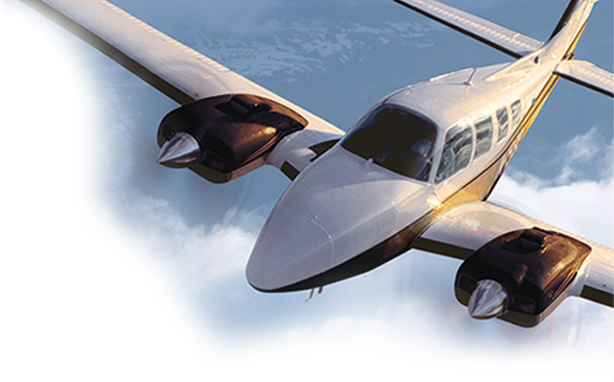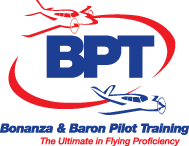
“Bears, Birds, Bugs and Bad Take-Offs”
By David Jack Kenny, ATP ASEL,
Commercial AMEL and Rotorcraft Helicopter
2,200+ hours combined
Not to mention unfortunate endings. Wildlife and aircraft don’t mix well. The alligator may lose the collision, but that doesn’t mean your airplane’s going to win.
It’s an image few who’ve seen it will ever forget: a once-handsome 1958 Super Cub (complete with cargo pod) savaged by an irritated bear in southwest Alaska. The predator shredded the fuselage and right horizontal stabilizer and destroyed both main tires. Its resourceful pilot had friends fly out fresh tires and tubes, industrial-strength plastic sheeting, and three cases of duct tape. His improvised repairs, while perhaps not legally airworthy under FAR 43, held up well enough to get the airplane back to Anchorage. (Accounts differ on what happened afterwards. One claims that his insurer wrote the airplane off as a total loss, but that seems unlikely for a tube-and-fabric model. Anyway, nine years later it’s still registered to the same owner.)
Bear encounters are chiefly a worry in the more remote parts of the country, but unduly close encounters with other animals, large and small, regularly disrupt flight schedules, damage aircraft, and worse. And while the wildlife routinely comes off the worse for the experience, so do the flying machines. Remember the description of a strong-armed baseball pitcher as “able to throw a strawberry through a brick wall?” Force is defined as mass multiplied by acceleration – which is why a bird as small as an American redstart (average weight one-quarter of an ounce) can cause reportable damage in a 120-knot impact with a structure engineered to be as light as practical.
Of course, damage from collisions with small songbirds is relatively rare, particularly when only a single individual is struck. (Species that travel in flocks pose additional hazards, though they may also be easier to see during daylight hours. Of the more than 4,500 collisions between aircraft and European starlings since 1990, for example, fully one-third involved more than one bird, multiplying the risk to aircraft and occupants.) This isn’t the case with species whose weights are more conveniently expressed in pounds. Twenty percent of the more than 1,000 collisions with mallard ducks (two and a half pounds), 38 percent of the 273 involving bald eagles (12 pounds), and more than half of the 775 collisions with turkey vultures (five pounds) resulted in aircraft damage. And Canada geese threaten the double whammy: They’re big, averaging about 10 pounds each, and they travel in flocks. Of more than 1,700 strikes, upwards of 40 percent involved two or more geese, and almost half resulted in significant aircraft damage. U.S. Air Flight 1549 (a/k/a the “Miracle on the Hudson”) is merely the best-known example.
What Goes Up …
It’s not surprising that most wildlife strikes involve birds – or that bats account for more than any other type of mammal or reptile. Aloft is, after all, where aircraft spend most of their time in motion. But the relatively brief periods spent taxiing and during the takeoff and landing rolls also offer opportunities for mischief which tend to involve larger critters.
Landings are the most problematic and account for the largest share. There are a couple of reasons: They involve the highest initial speeds (starting at flying airspeed and decelerating) and tend to focus the pilot’s attention most tightly on the space immediately ahead. If you taxi at reasonable speed, you should be able to stop short of the caribou that just wandered out of the woods, and if you’re looking down the runway towards the horizon you might see that herd of deer in time to abort the takeoff. While landing, on the other hand, your mind, eyes, and hands are occupied with the tasks of maintaining lateral control while timing the flare – and there’s a critical span of a few seconds in which an airplane’s neither going slowly enough to stop short nor fast enough to resume flying. I would say that landings are also more likely than takeoffs to take place after dark, but that might just reflect my personal habits.
If you’ve spent much time at airports around dusk (and don’t live in Hawaii), it also won’t come as much of a surprise that deer are far and away the leading culprits in runway collisions – or that those accidents are consistently serious, requiring repairs to more than 80 percent of the unfortunate aircraft. Coyotes run a distant second with about half as many, though given their speed and wariness, it’s still surprising that in a typical year, 20 or so fail to get out of the way. Curiously, dogs are only involved in one-twelfth as many collisions as coyotes, but about one-third of that dog stat does enough damage to send the aircraft to the maintenance hangar. In coyote accidents, the rate is less than 10%.
Who Needs to Move?
I recall that a bear attacked that duct-taped Super Cub while it was parked overnight. Many less dramatic but equally dangerous threats likewise arise while aircraft are sitting still. Birds like to nest in any available space during the spring mating season; nests in the engine compartment become combustible, while those in the tailcone, wings, or elsewhere are long-term corrosion hazards. And insects are even more insidious: wasp nests in fuel vent tubes have wrecked far more airplanes than runway collisions with moose (five and counting). A 2013 power loss just after takeoff in a Beech Sundowner was traced in part to “a golf ball-size mud dauber wasp nest in the carburetor throat.” (The same airplane also showed evidence of “bird nests and bird excrement” after the airplane’s pilot – and seller – claimed to have removed two nests from under the cowling.) And pilots have been known to veer off the runway trying to shoo wasps out of the cabin during the takeoff.
A Quarter-Ounce of Prevention
A good rule of thumb is that accidents are best avoided on the ground. That holds double (at least) for those triggered by bird and insect nests. Any aircraft tied out on the ramp during the spring and summer deserves excruciatingly close attention before its next flight – friends based here in Maryland have described cleaning out birds’ nests twice a day for seven consecutive weeks. Hangared examples aren’t entirely immune, either. Let me suggest running a pipe cleaner or length of stiff wire up the fuel tanks’ vent tubes at least once or twice a month just to make sure mud daubers haven’t begun nesting there.
Once the machine’s been checked, including fuel and oil, it’s time to assess the situation. Are you taking off at, near, or shortly after dusk? Have herds of deer or flocks of Mexican free-tailed bats been documented near that airport? If unsure on either point, turn on as many lights and make as much noise as you possibly can. The suggestion that vengeful animals are lurking to surprise airplane and automobile drivers remains a myth. Most sensible creatures will get out of the way if they can – and if they understand there’s a threat.
If you must land at a rural strip after dark, plan on a go-around – and use it to overfly the runway at perhaps 50 feet to scare off any intruders. Taking off, remain watchful and accelerate as gradually as you safely can. Give the deer and coyotes as much time as possible to clear off the runway – and yourself the best possible chance to stop if they don’t. After all, while the FAA’s Wildlife Strike Database is a fascinating place to visit, you don’t want to move in.
Data has been extracted from the following sources: FAA Wildlife Strike Database at https://wildlife.faa.gov/ and the Embry-Riddle Center for Wildlife and Aviation Species Information Table http://wildlifecenter.pr.erau.edu/databaseQuery/speciesRpt.html.
David Jack Kenny is an aviation writer and recovering statistician in Frederick, Maryland. He has been a statistician twice as long as he’s been a pilot but enjoys flying more than twice as much as analyzing data – particularly flying long cross-countries IFR, rescuing dogs as a volunteer for Pilots N Paws, and taking friends and neighbors up for introductory flights. He ascribes his helicopter certification to a characteristic lack of impulse control.
Articles and news items provided by Avemco® are not intended to provide technical or legal advice. Content is for general information and discussion only and is not a full analysis of the matters presented. The information provided may not be applicable in all situations, and readers should always seek specific advice from the FAA and/or appropriate technical and legal experts before taking any action with respect to any matters discussed herein. Articles provided by independent sources solely reflect the views of their respective authors and should also not be regarded as technical or legal advice.



